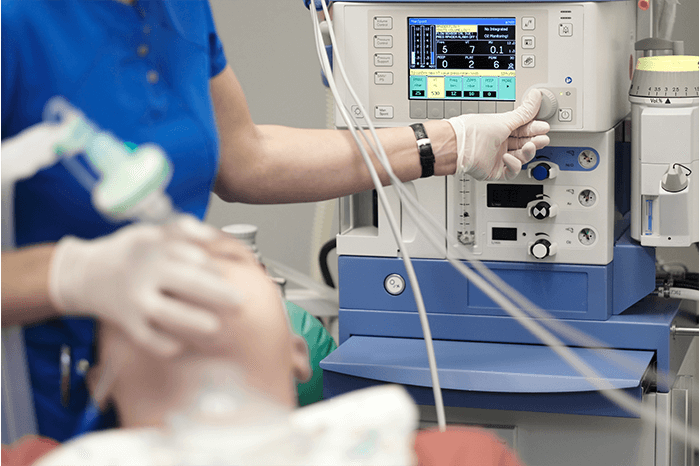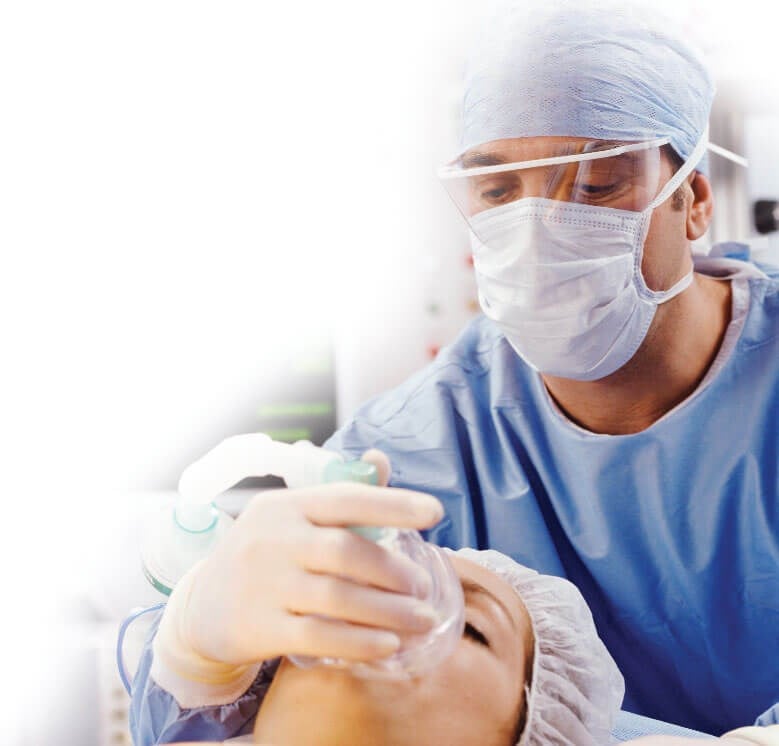BUT I DON’T WANT TO GO UNDER GENERAL ANESTHESIA!

"But I don't want to go under anesthesia!"
This is the second thing I hear from half of the women I meet. The first is a wish list of where they want the fat removed: from here, from there…and what do you think about the backs of my arms…and then, inevitably, about fifty percent of the time the next thing they say is: “But I don’t want to go under!”
For those of you who have knee-jerk-reaction fear of general anesthesia, I get it. You have obligations…young children, a job to go back to…and it freaks you out to think you’re risking your life for your vanity, and you figure if you can do it without “going under,” you’ll be safer.
I know I am not going to wipe out the general fear of “going under” with one blog. It’s like that thing that happened with the bagged spinach back in 2006. The E. Coli outbreak has long since been over but I still haven’t been able to bring myself to buy spinach in a bag.
But somebody needs to clear up the facts.
So here goes:
The definition of general anesthesia is:
The absence of sensation and consciousness as induced by various anesthetic medications, given by inhalation or IV injection.
(You can skip down to the red print if the following paragraph looks too boring and technical—you’ll still get the gist of it from the rest of the blog.)
The components of general anesthesia are analgesia (NO PAIN) amnesia (NO MEMORY), muscle relaxation, control of vital signs, and unconsciousness. The depth of anesthesia is planned to allow the surgical procedure to be performed without the patient’s experiencing pain, moving, or having any recall of the procedure. Endotracheal intubation or insertion of another artificial airway device and respiratory support are often necessary. General anesthesia may be administered only by an anesthesiologist with or without an anesthesia assistant or a Certified Registered Nurse Anesthetist.
So, it is a fact that many of you have actually had general anesthesia and you don’t know it. You think you had something called “Twilight.”
“Twilight” is not a technical term in the anesthesia dictionary. It is—besides being the biggest Vampire movie franchise of all time—a catchy marketing phrase that many cosmetic surgeons use to allay your fears about having “general anesthesia.”
Newsflash: once you’re asleep on the table, you’re asleep. It doesn’t matter how you get to that state. Just because you didn’t have a breathing tube in and all you got was IV propofol/the "Michael Jackson drug” (which, by the way, there’s nothing wrong with, as long as someone’s watching you while you’re getting it) doesn’t mean you didn’t have “general anesthesia.”
In fact, the truth is that it is usually safer to have “the tube” monitored by an anesthesiologist, controlling your airway, than just the sedation alone, or what is being sold to you as “Twilight.” Because if you are basically asleep without an airway, and your reflexes are blunted, you are at increased risk for complications of aspiration of your own saliva (ie, aspiration pneumonia) and not getting enough oxygen.
Then the inevitable question:
But what about like in one of those movies—what if I wake up in the middle?
It’s not going to happen. Not in an accredited facility with a Board-Certified Anesthesiologist (the only way I practice surgery.) When you are under “general,” the anesthesiologist has all kinds of fancy state-of-the-art equipment to monitor exactly how “asleep” you are, and it is second nature to him to keep you at the perfect level of sleep.

So how long will I be under?
Those of you plastic surgery virgins are shocked when you find out that it’s probably going to be at least a few hours, because getting your gallbladder out only took twenty minutes. While it sounds scary that your cosmetic procedure, depending on the complexity, could require you to be “under” for as long as six hours, the thing is that, this is not like having six hours of heart surgery. The anesthesia you’re getting is not as “deep.”
And remember, you want your results as perfect and as even as possible, and you don’t want your plastic surgeon rushing, or having his partner or resident doing one breast while he’s doing the other. So it takes time. W
ell, what about all those things I hear, about people dying from surgery and anesthesia?
And the subject of Kanye West’s mother invariably comes up.
It has been shown that Donda West’s unfortunate outcome was not due to the anesthesia or the surgery itself, but the fact that she had a pre-existing cardiac condition that was not addressed. And if you look into all of the other folklore about how “dangerous” general anesthesia is, you will see that almost all of those other stories have similar explanations. That is, not all of the I’s were dotted and T’s crossed before the surgery.
So, what are the I’s and T’s?
In my practice, safety always comes first, and I am extremely OCD about this:
1) Pre-op labs for everyone
2) Electrocardiogram (EKG) for you’re over thirty-five, or have any history of ANY kind of cardiac issue.
3) Chest X-Ray if you’re over fifty
4) Medical Clearance by your internist if you’re over fifty
5) Cardiac stress test if there is any question about cardiac disease
6) You should be off any birth control pills or (if it doesn’t turn you into a monster) peri- and post-menopausal hormonal replacement since estrogen and progesterone can increase risks of blood clots (ie, pulmonary embolus and deep venous thrombosis.)
7) Full past medical and surgical history, including family history of bleeding disorders, blood clotting disorders, or problems with general anesthesia.
8) STOP all recreational drugs (i.e., coke, ecstasy) at least two weeks before your procedure. I don’t judge, but you need to time your breast reduction/lipo/breast aug well around events like Coachella. You must know that these drugs can have serious interactions with anesthetic agents and need to be out of your system well before the surgery, and some of the “horror stories” you hear about reactions to general anesthesia are due to patients withholding information about what they do in their spare time.
I only work with board-certified anesthesiologists in fully-accredited facilities, where all of the resources and equipment are available to take care of any out-of-the ordinary issue that might arise, including the diagnosis and treatment of malignant hyperthermia (a rare condition with an incidence of 1/50,000 to 1/100,000), which is really the one and only thing that truly is a reaction from the anesthesia itself.
I’m not saying that there are zero risks. But there are not zero risks to walking out onto the street, either, and if nothing else, you should understand that, if you are healthy and not excessively overweight (and by that I mean morbidly obese, not just trying to lose that extra five to ten pounds), and all the I’s have been dotted and T’s crossed before the surgery, the risks of something happening to you because of the anesthesia are less than the risk of you getting in your car and driving home, and not just on the 405
. 
Perhaps the best testament to the safety of anesthesia is that those of us who work in “the business” (the business of plastic surgery, not entertainment, although I’ll be the first to admit, there’s kind of a grey area) are ready to jump on the table at a moment’s notice if there’s a procedure that we want to get done.
So, if nothing else, I hope that this blog has given you a little more perspective on the scary, ambiguous topic of “general anesthesia.” And if you have more questions, please come talk to us!
XO
LQ